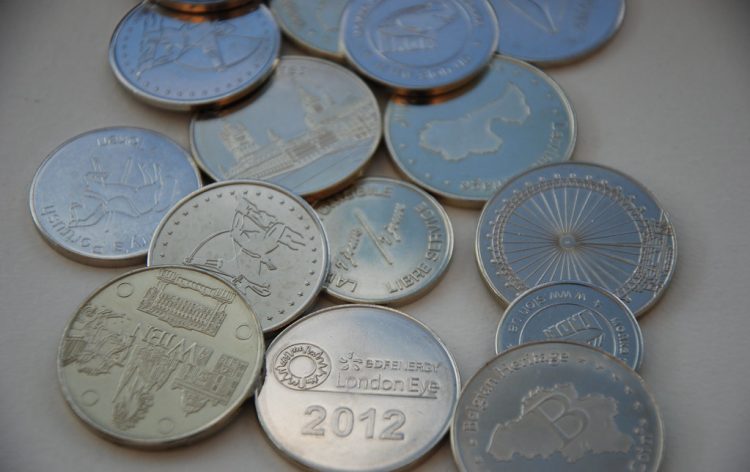The future of e-commerce is in alternative payment

‘Alternative’ is the word that has a time frame: something is only alternative and innovative for a certain period of time. Once it goes to the mainstream or proves to be inefficient, it’s innovatory characteristics fade away. At the end of the day, it either becomes an integral part of our everyday life or disappears completely.
When we’re talking about the alternative payment methods, we mean those ways of commerce that are yet to be integrated into the conventional ways of commerce. For a long time, the debit/credit card payment was an alternative payment method that superseded cash payment. And now, we’re almost solely dependent on our banking cards.
These days, however, credit/debit cards are also becoming obsolete in light of new, faster and more secure methods that are integrated within the world of the Internet. While there is an increasing number of payment options in almost every industry around the world, from online gambling to online shopping, companies and entrepreneurs are trying to keep up their pace with the changing e-commerce environment.
In this article, we’ll be covering this subject by listing some of the main forms of alternative payment method (APM), as well as exploring their main driving forces.
The most popular APMs
Alternative payment methods, as we already mentioned, are types of e-commerce that are somewhat less popular due to their innovative characteristics. However, there’s a plausible prediction that in 2019, 55% of all online transactions will be made using APMs. That’s because customers are more drawn to the payment methods that offer them a diversity of options and a high level of convenience.
Here are some of these methods:
Digital wallet – this one is perhaps the most popular alternative (as if they go together) method of payment today. It’s usually managed from mobile or desktop apps by connecting debit/credit cards and shopping through the Internet.
The popularity of this method is related to the expansion of mobile devices and greater convenience of immediate purchase, as well as higher chances of financing. One prevalent example of a digital wallet is Apple Pay which was released in 2014 and offers a wide array of credit/debit cards;
Online banking – it’s another online method of payment that still involves traditional banks. This method is used when the purchase is made online and the shopper approves the funds through their online bank accounts;
Instant financing – this is yet another form of alternative payment method that offers greater flexibility. It resembles the conventional credit schemes that are already well-known but differs from them with simplicity: the financers require far less personal information from the customers to process their applications.
This method is also managed through the Internet via mobile or desktop applications. It expands in popularity mainly because of how simple and fast the financing process is. And the shoppers are not constrained with strict conditions – they can choose to pay back with the timeframe of their liking;
Try before you buy – this is a great method of payment particularly for the fashion industry. When you want to buy your favorite jeans that’s also quite expensive, you want to make sure that you’re making the right decision. That’s why you physically go to the store and try them on.
Now, with the ‘try before you buy’ method offered by the big companies like Amazon, you’re able to order those jeans, try them at home in a comfortable environment and decide, whether you want it or not. It all happens without you leaving your home. You pay for the order if you like what you got.
What drives the APMs?
Now let’s talk about why the alternative payment methods have gained traction and are destined to become part of the mainstream. There are three key points here: demand, customer choice, and the rise of innovative checkout technology.
Customers around the world have become savvy when it comes to protecting their private credentials. We hear stories of hacked bank accounts every day, which raises our concern with the conventional methods of payment.
Not only that, we want to be able to make payments without the hassle involved in entering complicated payment information. Now, with the APMs growing in popularity, we’re able to do just that.
As for the businesses and entrepreneurs, they’re focused on providing an experience that’s in accordance with customer satisfaction. They’re aware that shoppers want to dictate their own terms to the industries. And now, these terms involve safer and easier methods of payment like digital wallets and online banking.
Now, more than ever, the businesses are able to meet this exact demand of their customers because of how easy it is to do that. Online payment methods don’t require chunky, traditional payment systems that need to be updated every once in a while. The transition can be easily made through the web-based systems that offer safety and convenience to the customers and businesses alike.
The world is increasingly getting digital. Shoppers around the world are placing the orders using their online accounts and wallets, while the businesses process these orders through their online systems of payment reception and financing schemes.
The safety and flexibility that’s involved in the alternative payment methods are enough to make the conventional systems of credit/debit cards and cash payments obsolete. Time has come for electronic commerce.



























Comments (0 comment(s))